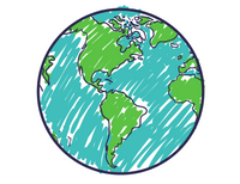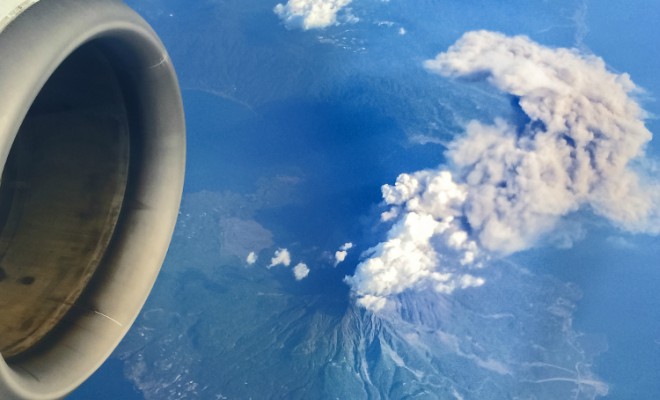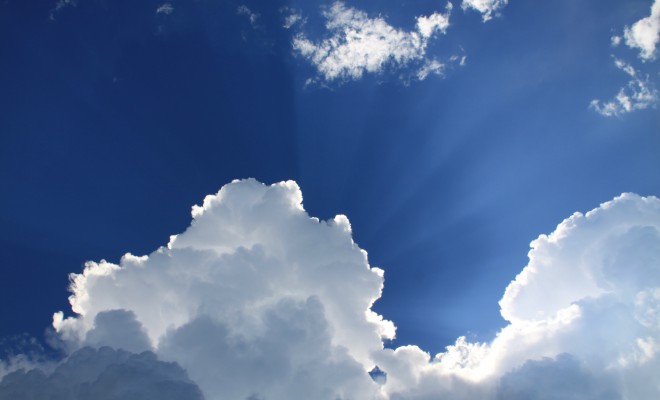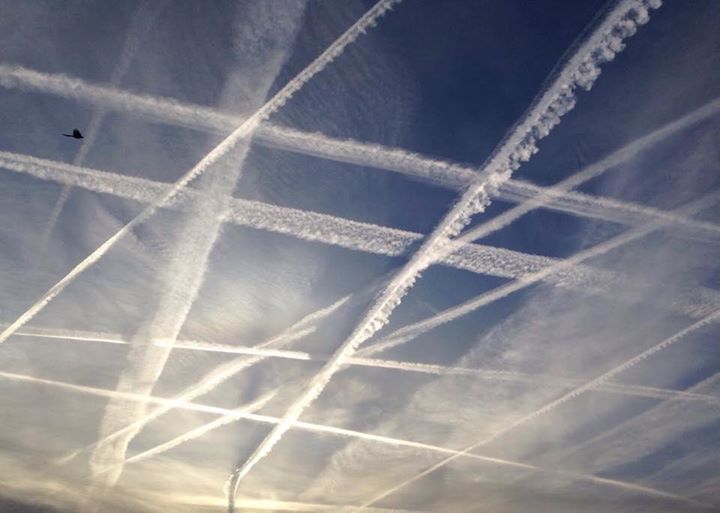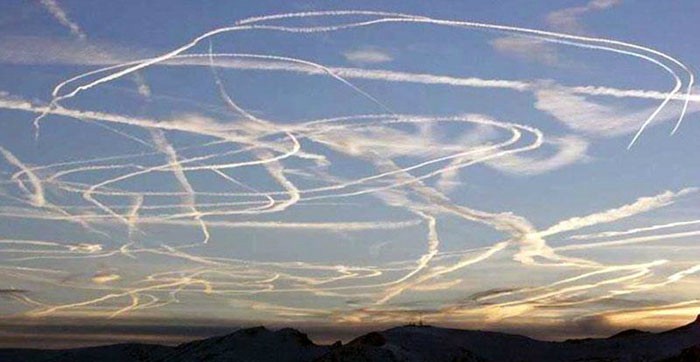We know that sulfur dioxide in an ash cloud when spewed from an erupting volcano into the atmosphere cools, blocks the sun, absorbs heat and reduces air temperatures. A similar chemical reaction creates persistent aircraft condensation trails (Cirrus Homogenitus). The reaction is caused by the combustion of sulfur-laced jet fuel mixed with water vapor. Simply put, those persistent aircraft condensation trails in the sky are sulfur dioxide inspired man-made Cirrus clouds.
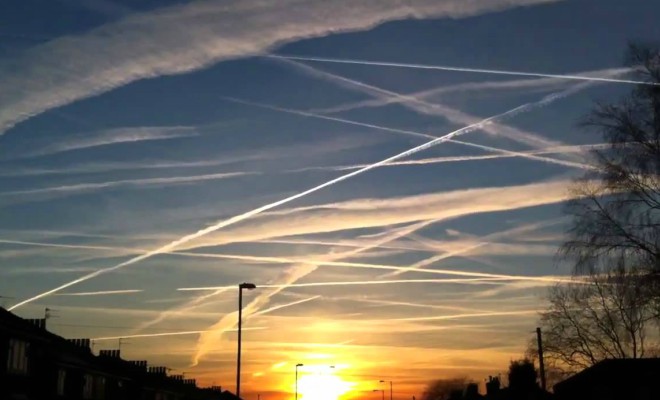
The climate effect of these fake clouds is subtle but similar to a volcanic eruption plume.
Sulfur dioxide triggers persistent condensation trails that expand across the sky, sucking moisture and humidity from the air as they spread out. The official FAA Contrail Fact Sheet states:
“They [contrails] do affect the cloudiness of the Earth’s atmosphere, however, and therefore might affect atmospheric temperature and climate.”
Which prompts the reasonable mind to ask if sulfur can be removed or reduced in jet fuel to stop the fake clouds? Well, yes it can.
The European Aviation Safety Agency (EASA) and the US Federal Aviation Administration (FAA) have recently sponsored studies into ultra-low sulfur jet fuel standard (15ppm). Ground transportation and shipping have already been required to reduce sulfur emissions, which has cut atmospheric sulfur oxides (SOx). Currently, the sulfur content of aviation fuel has not been regulated, however, and has hits highs of 3000ppm. Although, the FAA believes that aviation fuel averages 600ppm in practice.
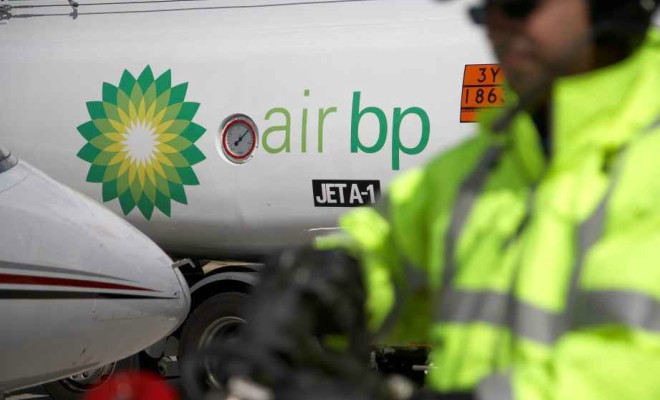
So, if sulfur can be reduced so significantly from aviation fuel why don’t they do it?
The cost to remove the sulfur has a few layers. The process of desulfurizing jet fuel would increase fuel costs for the global aviation industry by around 2%. And, there is a CO2 emissions cost incurred by the process of desulfurizing the fuel. This would increase the burden of greenhouse gasses born by the world as a whole. Additionally, according to this 2012 article by Anthony King in Chemistry World,
“The study also pointed to climate downsides: desulfurizing fuel would reduce the formation of cooling sulfate particles, which currently offset some global warming.”
So, here are the facts:
- Sulfur dioxide causes persistent condensation trails.
- The sulfur content in aviation fuel is unregulated and hits highs of 3000ppm, but could be desulfurized to 15ppm.
- Studies show that the DOWNSIDE to desulfurizing aviation fuel is a reduction in the cooling sulfate particles that create persistent contrails.
- Today, aviation fuel remains unregulated and contains a high sulfur content which supports persistent condensation trails or man-made clouds.
TO RECAP: Sulfur dioxide in jet fuel causes persistent man-made cloud cover. Many agencies consider man-made clouds formed by dispersing sulfur dioxide into the atmosphere beneficial to reducing global warming.
Given these facts, one may conclude that persistent condensation trails are intentional. The fake clouds are triggered by a chemical agent (sulfur dioxide) deliberately dispersed via jet fuel for purposes unknown and undisclosed to the general public.
Contrails, by common definition and in effect, are chemtrails.
